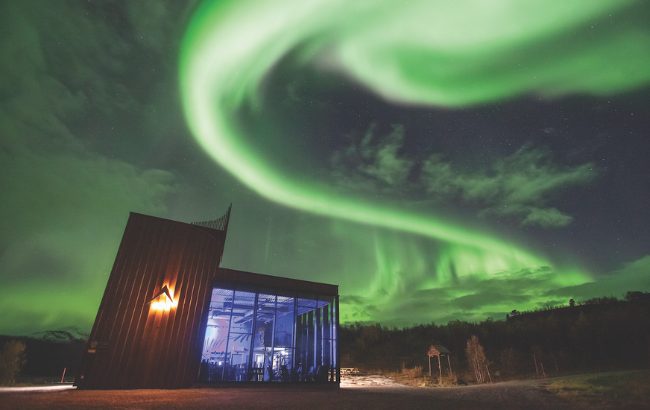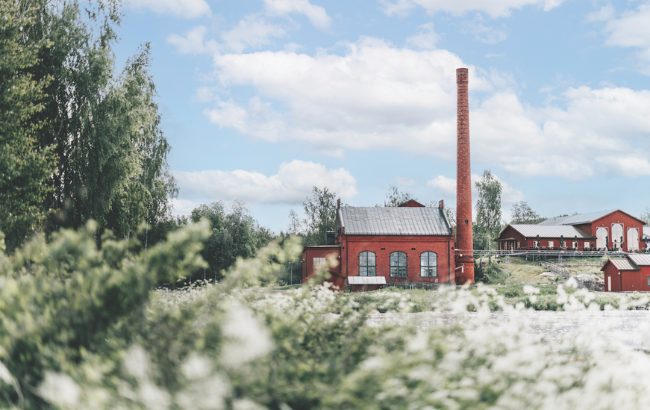Northern heights: Scandinavia’s spirits success story
By Heather StorgaardScandinavia is one of the spirits world’s success stories, with its brands acclaimed by admirers around the globe for their unusual flavour profiles and fresh approach to liquid creation, as Heather Storgaard reports.

*This feature was first published in the October issue of The Spirits Business magazine.
In recent years, the Nordic region has become one of the most dynamic markets for alcoholic spirits. Blending centuries‐old traditions with bold innovation, the past 30 years have seen craft distilleries steadily grow into challengers on the world stage. Despite strict marketing restrictions, high taxes, and often harsh climates, the success of the Nordics is clear to see in bars and at shows internationally. Perhaps exactly because of their growth in the face of those challenging circumstances, the story of spirits from the north is one from which the whole globe can learn.
The Nordics have quietly gained a reputation for pushing boundaries in the spirits world. The region has little in the way of prescribed restrictions, which distilleries have been using to their advantage.
In whisky, experimental cask releases have become characteristic for the region, from a teak wood finish at Norway’s Aurora Spirit to aquavit ageing at Copenhagen Distillery. Local smoking techniques have also been used to bring a regional taste to whisky – from nettles at Fary Lochan and beech at Thy, both in Denmark, to alder trees at Kyrö in Finland. In a market increasingly described as crowded, distilleries taking such approaches stand out and offer a taste experience that challenges even the most experienced drinkers.
Fascinating innovations
Place‐based innovation is even brought into white spirits, too. Some of the most fascinating ones come from Faer Isles Distillery in the Faroe Islands. Its sub‐sea vodka uses a pocket of million‐year‐old fresh water, discovered during the construction of tunnels between the islands of the North Atlantic archipelago, and tastes like nothing else in the category. In Denmark, Anholt Gin is produced on a tiny island in the Kattegat, known for its abundance of wild juniper. Taking that, the distillery organises an island‐wide juniper picking week each autumn, rewarding their volunteers with hearty lunches and a festival atmosphere.

Boundary pushing can, however, also result in unexpected conflicts. This year, producers in the region were rocked by new guidance issued by their domestic food and drink authorities, limiting the use of the term ‘rye whisky’. Stemming from a long‐overlooked EU trade agreement, rules state that ‘rye whisky’ sold in the EU must come from Canada, with an exemption for products from the US. When it was signed, there simply was no Nordic whisky, but in the meantime strong brands have grown, based on the region’s love for rye. For producers, the challenge now is persuading those in power that change is necessary. In response, both Kyrö and Denmark’s Stauning have updated their packaging while also pursuing engagement with politicians and policymakers in recent months, in efforts to convince them to reopen negotiations at EU level.
International attention
“I am a big optimist at the moment,” explains Roar Larsen, co‐founder of Myken Distillery in Arctic Norway. Rightly, too. Myken was founded in 2014 to produce both gin and whisky, after the island community came together to brainstorm how best to safeguard the future of their Arctic home. Few could have imagined how successful the endeavour would turn out. The brand’s ‘Whisky Cathedral’ maturation warehouse has won one of Norway’s top architecture prizes, tourism has risen, and international attention is growing. This autumn in particular is a time for celebration – capacity was recently expanded, a new CEO has just been hired, and in September the distillery celebrated launching Norway’s first 10‐year‐old, age‐ statement whisky, with a redesign to freshen the brand. Roar sees this as one part of the growth of Nordic spirits as a category, with the launch of the Nordic Whisky Collaboration this year demonstrating the confidence of the entire industry.
The Nordic Whisky Collaboration is a typically Nordic approach to a new industry. Speak to most distillers from the region, and they will emphasise that the strength of the industry comes from the community’s willingness to organise and work together.
To better mobilise this, new craft spirits bodies have sprung up domestically in the past few years, creating standards for spirits or simply to manage lobbying work.
This year, the Nordic Whisky Collaboration was launched in Copenhagen, aiming to collaborate on a regional level, too. Although the exact fingerprint of each distillery is different, its whisky philosophy reflects the region’s contemporary food‐and‐drink culture, strongly influenced by the New Nordic Cuisine movement. High‐quality, seasonal ingredients and traditional methods are emphasised in a way that is nevertheless new and fascinating. The group members aim to help one another on a practical level, too – they are getting together for The Whisky Exchange’s Whisky Show in London from 3‐5 October to host a Nordic Zone at the event. After all, a rising tide lifts all boats.
Beyond the snapshots of whisky shows, international interest in Nordic spirits is also growing. This year, cult whisky blender Woven launched a ‘Friends in the North’ blend of whiskies from across the region.
Co‐founder and blender Nick Ravenhall led the idea, driven by the passion he developed for local whisky during his time living in Oslo, Norway. “The whisky was staying local, and I didn’t think we were talking about the Nordics enough,” explains Ravenhall. “From our perspective as blenders, working with other whisky regions really pushes our knowledge on how we put flavours together.” The release was clearly a success, with very little stock left a year after the launch.

Non-traditional markets
Multiple brands mention the US as a region they were previously considering for export, but the current instability means the country is no longer seen as a key aim. However, non‐traditional markets are slowly opening. Southeast Asia is a clear target region for many brands, including Sweden’s High Coast and Norway’s Myken. For Linus Håkansson, CEO of High Coast in Sweden, the possibilities are exciting. “Asian markets are really open to non‐heritage whisky,” he notes. “There’s such great curiosity there, for whisky but also other cultures. They also really appreciate our clean landscapes in the north.” Roar Larsen agrees – attendees from Hong Kong, Shanghai, and South Korea made the long journey to attend Myken’s Whisky Festival last year. “They left as big Myken enthusiasts,” he smiles.
Contrastingly, international interest recently meant a trip to Kyiv Whisky Festival for Mikko Koskinen, co‐founder of Kyrö in Finland. “Ukraine has seen big growth in western spirits since the start of the war,” he explains. “We were the only foreign brand at their festival, and there was such amazing energy.”
The Finnish spirits producer has seen 50% growth in their whisky sales in travel retail, while interest from airlines such as Finnair has also helped its gin to grow, and its vodka to stay steady recently. Koskinen is also excited about places often overlooked by larger brands – his bet is on Africa.
In Norway, distilleries are united in a push to convince the next government to bring in a relaxation to cellar‐door sales. “We are dedicated to making change so we can begin to sell bottles to visitors who take a tour,” explains Tor Petter W Christensen, CEO of Aurora Spirit and deputy chairman of Norwegian Distilleries.
His words are echoed by most Norwegians in the industry, who are frustrated with their lack of direct access to customers. Neighbouring regions have seen some liberalisation in recent years – the Faroe Islands recently relaxed its rules, while Sweden has also liberalised them for smaller distilleries.

However, for Håkansson from High Coast, the issue continues to be a concern, as the distillery is too big to be allowed an on‐site shop. “We have thousands of visitors during our Midsummer festival – people are so happy to visit us, and we love hosting them, but we still can’t sell them our whisky,” he explains.
Aquavit, meanwhile, believed to date back to the 15th century, has suffered from dips in popularity over time as locals became acquainted with prestige brands of brown spirits, such as Cognac and whisky. Yet, with the growing interest in Scandinavian lifestyle and culture, local food and drink trends are spreading further than before.
Danish producer Nordic Ethanol is enjoying increased interest in its flagship aquavit products, as bartenders search for something new to combat customers becoming weary of gin. “We’re doing well in France,” says founder Nicolai Sivgaard Simonsen. “They find our aquavit exotic, and it’s organic, high‐ quality – people are sipping it with tonic water or soda in the South of France in the summer, as they would gin.”
The distillery is showcasing the modern ways to drink aquavit to international visitors from its home of Copenhagen, too. In May, it opened a bar called Velour. Everything served there is made from scratch, from the flagship aquavit to rum and even syrups for cocktails. It’s a concept that appeals particularly to international visitors in the Danish capital – Sivgaard Simonsen estimates that around 80% of its customers are tourists.
At a time when spirit sales are declining around the world, it is worth paying attention to a region where brands are growing despite consumption being already generally low. Active collaboration, local and international on‐trade partners and “systematic innovation”, to quote Koskinen from Kyrö, seems to be a winning formula that allows distilleries to weather storms.
There is no doubt more Nordic spirits will be entering global markets to delight the taste buds of consumers around the world.
Related news
EU spirits: the taste of Scandinavia
Riga as a strategic logistics hub for beverages across Europe, Scandinavia and Asia
Scandic Bar: elevating bartending with Scandinavian style and quality
